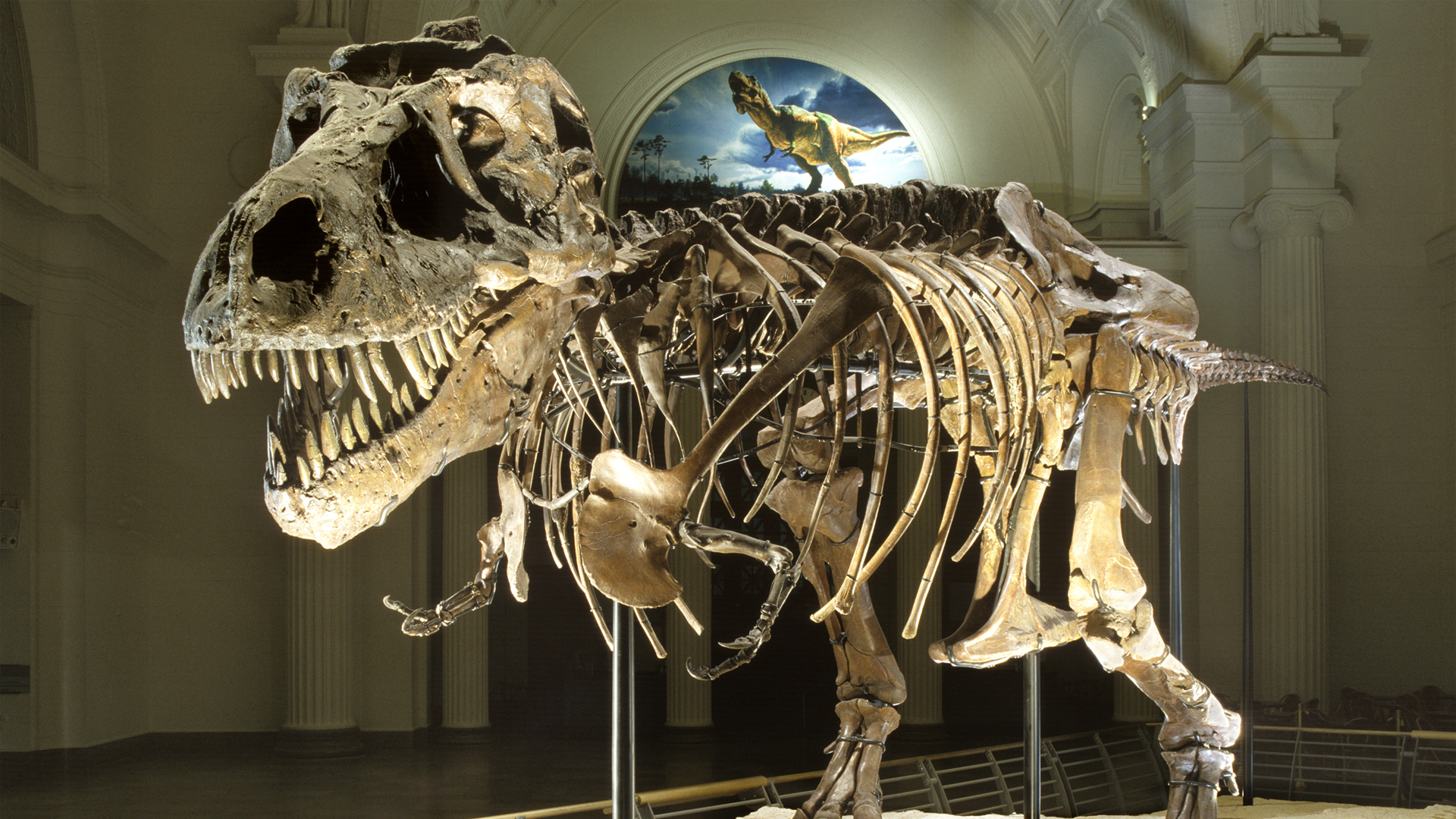Sue the T. Rex Unearthed in South Dakota

Sue the T. Rex
What Happened?
On a hot August day in 1990, fossil hunter Susan Hendrickson wasn’t planning to change science—she was just killing time while her team repaired a truck. Hiking the cliffs near Faith, South Dakota, she noticed three huge bones protruding from the rock face. They belonged to a Tyrannosaurus rex unlike any ever found before: over 40 feet long, 13 feet tall at the hips, and more than 90 percent complete.
The skeleton, nicknamed 'Sue,' was excavated by the Black Hills Institute of Geological Research, which paid landowner Maurice Williams $5,000 for the right to dig. But two years later, the FBI and National Guard seized Sue, sparking a five-year legal fight over ownership. It turned out the land was held in trust by the federal government for the Cheyenne River Sioux Tribe, making the sale invalid.
In 1997, the Field Museum in Chicago purchased Sue for a then record $8.36 million, with funding from McDonald’s, Disney, and private donors. In 2000, Sue went on display, instantly becoming one of the museum’s star attractions.
Scientifically, Sue has been invaluable. The fossil revealed that T. rex had an extraordinary sense of smell, grew rapidly during adolescence, and even possessed a wishbone, supporting the theory that birds are living dinosaurs. Sue’s bones also tell a story of survival through injuries and disease, from arthritis to broken ribs.
Sue’s discovery also transformed the fossil world. The record-breaking auction set off a fossil gold rush, driving up prices and fueling tensions between commercial collectors and scientists. Today, Sue remains a powerful reminder of the delicate balance between scientific discovery, cultural heritage, and commercial interest.
Why It Matters
Sue’s discovery was more than a paleontological jackpot, it was a turning point in how we think about the ownership of natural history. This fossil taught scientists about the biology, behavior, and evolutionary ties of one of Earth’s most iconic predators. But it also exposed the tug-of-war between science, commerce, and cultural heritage, forcing us to ask: who should control the past, and who gets to learn from it?
?
What can Sue’s skeleton tell us about the daily life and hunting behavior of T. rex?
How did the legal battle over Sue influence fossil ownership laws in the United States?
Why was the discovery of a wishbone in Sue important to our understanding of dinosaur evolution?
How do commercial fossil sales affect scientific research and museum access?
If you discovered a scientifically significant fossil, who should own it—you, the landowner, the government, or the scientific community?
Dig Deeper
Sue is one of the largest, most extensive, and best-preserved T. rex fossils ever found. This video covers the fascinating and controversial story of her discovery and journey to the Field Museum.
Paleontologists rarely find complete dinosaur skeletons. This video explains how scientists use both technology and creativity to fill in the missing pieces.
Related

The 13 Colonies: Seeds of a New Nation
How did thirteen scattered colonies along the Atlantic coast grow into the foundation of a new nation?

The Right to Protest & Civil Disobedience: How Activism Shapes Democracy
From labor strikes to mass demonstrations, activism has been the engine of social change. But what makes a movement successful? This deep dive explores the different roles in activism, the power of civil disobedience, and why protests are essential to democracy.

The Gilded Age, Industrialization, and the 'New South'
A glittering era of innovation and industry, the Gilded Age promised progress but delivered inequality. In the South, leaders dreamed of a 'New South,' yet industrialization offered opportunity for some while reinforcing systems of poverty and discrimination for others.
Further Reading
Stay curious!
